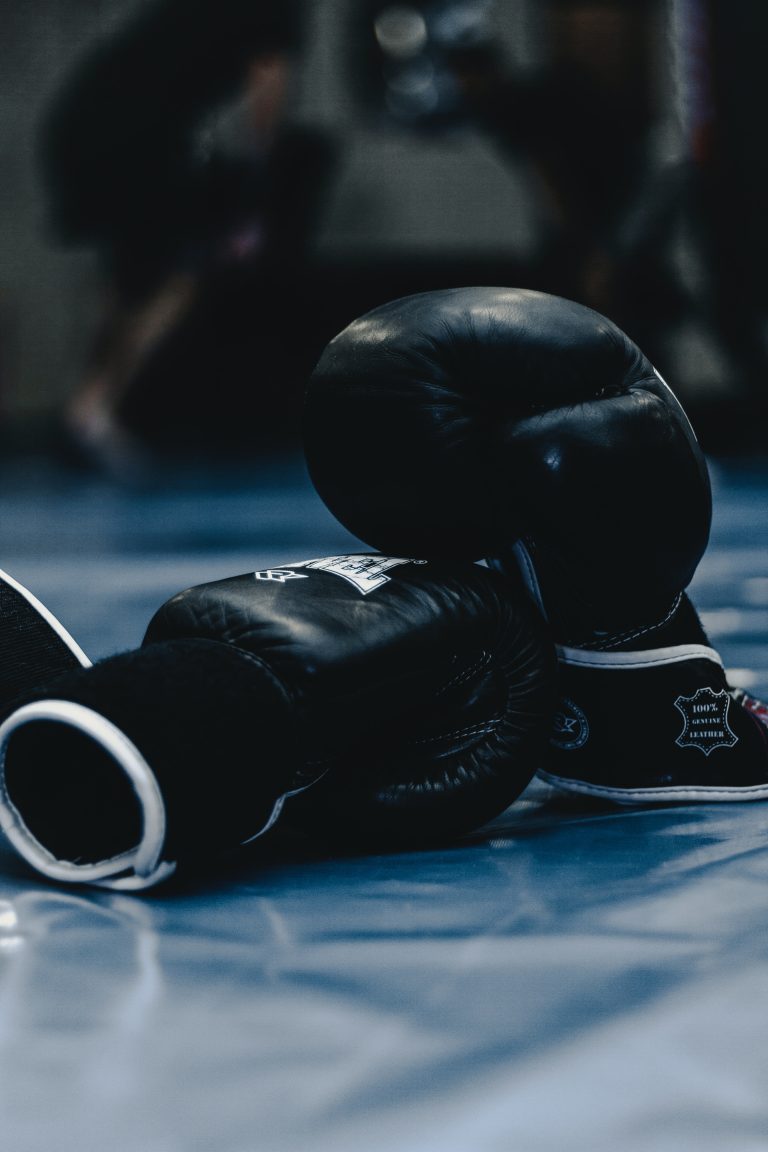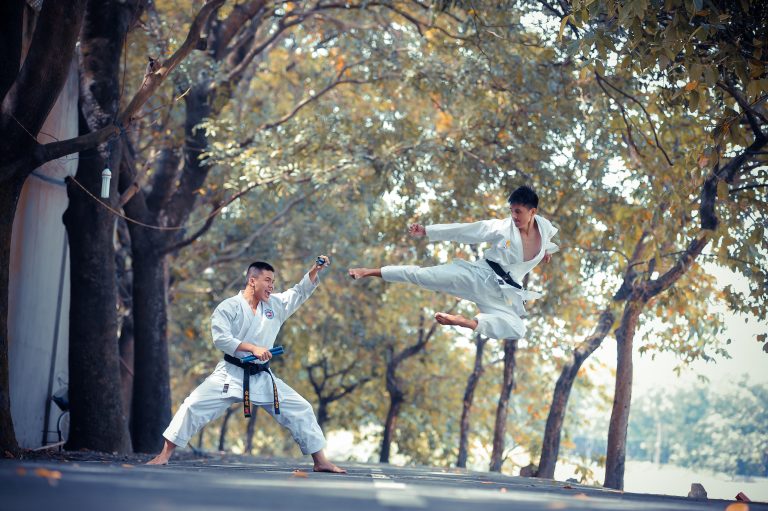What are all the colors of belts in Karate?
Karate is a martial art form that originated from Okinawa, Japan, and has gained popularity worldwide. One of the distinguishing features of Karate is the belt system, which is used to indicate the practitioner’s proficiency and experience level. Belt colors in Karate signify the rank of the individual and represent their achievements, knowledge, and skill level.
In this blog post, we will explore the different colors of belts in Karate and their significance.
White Belt
The white belt represents the beginner level in Karate. It symbolizes a clean slate with no knowledge of Karate techniques or principles. The white color of the belt signifies purity and humility, as a beginner Karateka must be willing to learn and embrace new concepts with an open mind.
Yellow Belt
The yellow belt represents the first achievement in Karate. It is awarded to a student who has gained a basic understanding of the fundamental techniques and principles of Karate. The yellow color of the belt symbolizes the sun, and it represents the warmth and vibrancy of the new level of expertise that the student has achieved.
Orange Belt
The orange belt is awarded to a student who has demonstrated a significantly improved level of understanding in Karate. The orange color of the belt signifies the rising sun and represents the constant growth and improvement of the student.
Green Belt
The green belt represents the growth and development of a student’s Karate knowledge and skill. The green color of the belt represents spring and new beginnings. The student at this level has gained a deeper understanding of Karate techniques and is now ready to expand his skill set.
Blue Belt
The blue belt signifies the inner growth of a student. It is awarded to a student who has developed a deeper understanding of Karate principles and concepts. The blue color of the belt represents the sky and the vastness of knowledge that a student has acquired.
Purple Belt
The purple belt represents the transition from a beginner to an intermediate level of proficiency in Karate. It is awarded to a student who has shown significant progress and dedication towards the art. The purple color of the belt represents the twilight and reminds the student that there is still a long journey ahead.
Brown Belt
The brown belt represents the maturity and growth of a student as a Karateka. It is a symbol of the student’s ability to apply the principles of Karate to his daily life. The brown color of the belt represents the grounding of the student’s knowledge and signifies the stability and the foundation of his skill set.
Black Belt
The black belt is the highest attainable rank in Karate. It signifies the mastery of the art and represents the student’s journey towards excellence. The black color of the belt represents secrecy, discipline, and the infinite journey towards learning.
What Are All The Colors of Belts in Karate?
Introduction
Karate is a martial art that involves a set of techniques and practices for self-defense. One of the most distinctive features of karate is the use of color-coded belts to indicate the rank and proficiency of a practitioner. Belt colors represent the progress and development of a karate student, as they move from beginners to experienced adepts. In this blog post, we’ll answer some of the most frequently asked questions about the colors of belts in karate.
What Are The Different Colors Of Belts In Karate?
The traditional karate belt system usually consists of white, yellow, orange, green, blue, brown, and black belts. Here’s what each color typically represents:
White Belt
This is usually the first belt a student earns when they begin their karate journey. The white belt symbolizes purity and represents a blank canvas, as the student has yet to learn the basics of karate.
Yellow Belt
The yellow belt signifies that the student is making progress in their training. They have started to learn basic techniques and skills that are needed for advancement to higher levels. Yellow is also said to represent the sun, which is an important symbol in many cultures.
Orange Belt
Orange represents the growing power of a martial artist. Students with an orange belt have shown an ability to control their movements and apply their techniques with finesse.
Green Belt
Green is the color of growth and represents the student’s growing knowledge of the martial art. At this level, students have demonstrated proficiency in fundamental techniques, such as kicks, strikes, and blocks.
Blue Belt
The blue belt signifies the student’s continued growth towards proficiency. Students have demonstrated control and precision in executing advanced techniques, such as joint locks and throws.
Brown Belt
At this level, the student is considered an advanced practitioner. Brown is a color that symbolizes maturity and responsibility, as brown belt holders are expected to mentor and train others.
Black Belt
The black belt is the highest rank in traditional karate. It symbolizes mastery and expertise in the art. Black belt practitioners are expected to be a role model and guide for other students of karate.
Are There Any Other Belt Colors?
While the traditional belt system usually includes the colors mentioned above, some schools may use different colors to indicate rank. Other organizations may use different variations of the colors to distinguish levels of proficiency. It’s always best to check with your karate school to determine what belt system they use.
How Long Does It Take To Earn Each Belt?
The time it takes to earn each belt can vary depending on the specific school and individual student. Students are generally required to demonstrate proficiency in specific techniques and skills before they can advance to the next belt level. Some schools have a minimum duration of training between belt tests; usually around three to six months. However, it’s best to check with your karate school to determine their specific requirements.
What are all the colors of belts in karate?
Karate is a martial art that teaches self-defense and discipline. One of the ways to show progress in karate is by earning different colored belts. Belt colors in karate signify rank and skill level. There are several colors of belts in karate, and each color represents a particular level of achievement. In this article, we will guide you through all the colors of belts in karate and what they stand for.
White Belt (Beginner)
The white belt is the first belt a student receives in karate. It symbolizes purity and innocence, as the student is new to the art and has not yet learned any techniques. The white belt also represents a blank slate, where the student is ready to learn and absorb all the knowledge that comes with the journey.
Yellow Belt (Novice)
Once a student has learned the basic techniques and forms of karate, they receive a yellow belt. This belt signifies the beginning of the student’s journey towards proficiency. It represents the growth and development of skills that are necessary to become a skilled practitioner of karate.
Orange Belt (Intermediate)
The orange belt is the next step in the journey towards mastery. It signifies that the student has gained a better understanding of the technique and is beginning to explore its deeper aspects. The orange belt is awarded to students who have practiced for a few months and have shown improvement in their skills.
Green Belt (Intermediate)
After showing proficiency in the orange belt stage, the student is awarded the green belt. The green belt signifies growth, progress, and development. This belt is only awarded to students who have shown dedication and commitment to the practice. The student understands the art deeply and can react in scenarios that demand self-defense techniques.
Blue Belt (Advanced)
Once the student has reached the blue belt level, they have reached an advanced stage in karate. The blue belt signifies the sky or the cooling breeze that nature provides, indicating that the student has reached high and far in their journey. The student has a deep understanding of the technique and is becoming skilled at performing them.
Purple Belt (Advanced)
The purple belt is awarded to students who have reached an expert level of karate. They are knowledgeable in all aspects of the martial art and are more proficient in executing techniques in diverse scenarios. It is said that the purple belt is one of the most challenging stages to progress through, as it requires significant practice, determination, and skill.
Brown Belt (Expert)
The brown belt signifies the earth and stability. It represents the stage where the student can stand firmly on their ground, execute techniques with power and grace, and lead others through their martial art journey. It is awarded to students who have shown a high level of proficiency in their training.
Black Belt (Mastery)
The black belt is the ultimate rank and symbolizes mastery. It is awarded to students who have spent years perfecting the art of karate, dedicating themselves to its techniques, forms, and philosophies. The black belt is a culmination of hard work, perseverance, and self-discipline.
Conclusion
Karate belt colors signify a student’s skill and rank in the discipline. Each belt represents a stage in the student’s journey towards mastery, from white to black. Every belt, including the white belt, is an essential step in the journey, representing growth, development, and progression towards mastering the art.
Inhaltsverzeichnis






